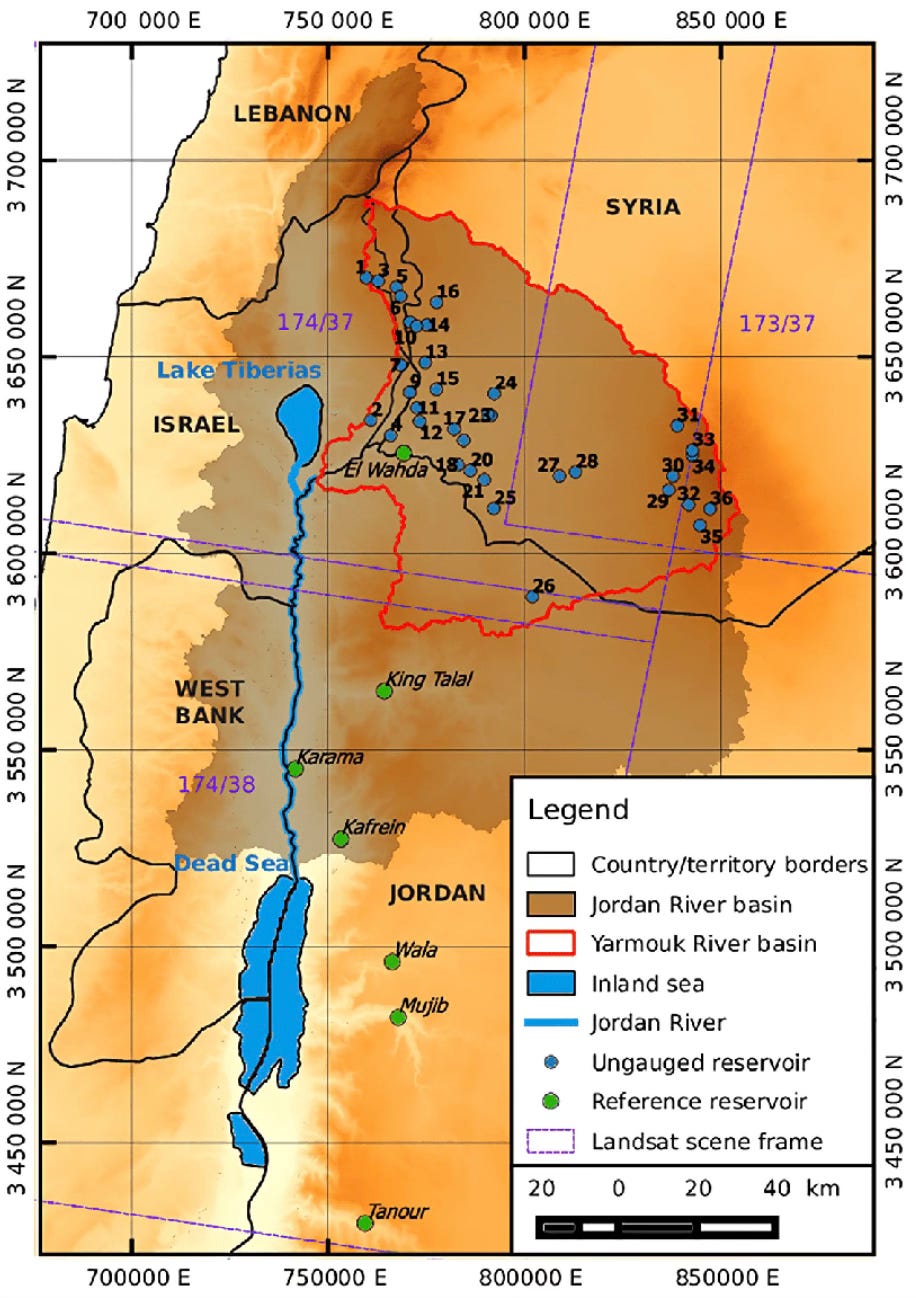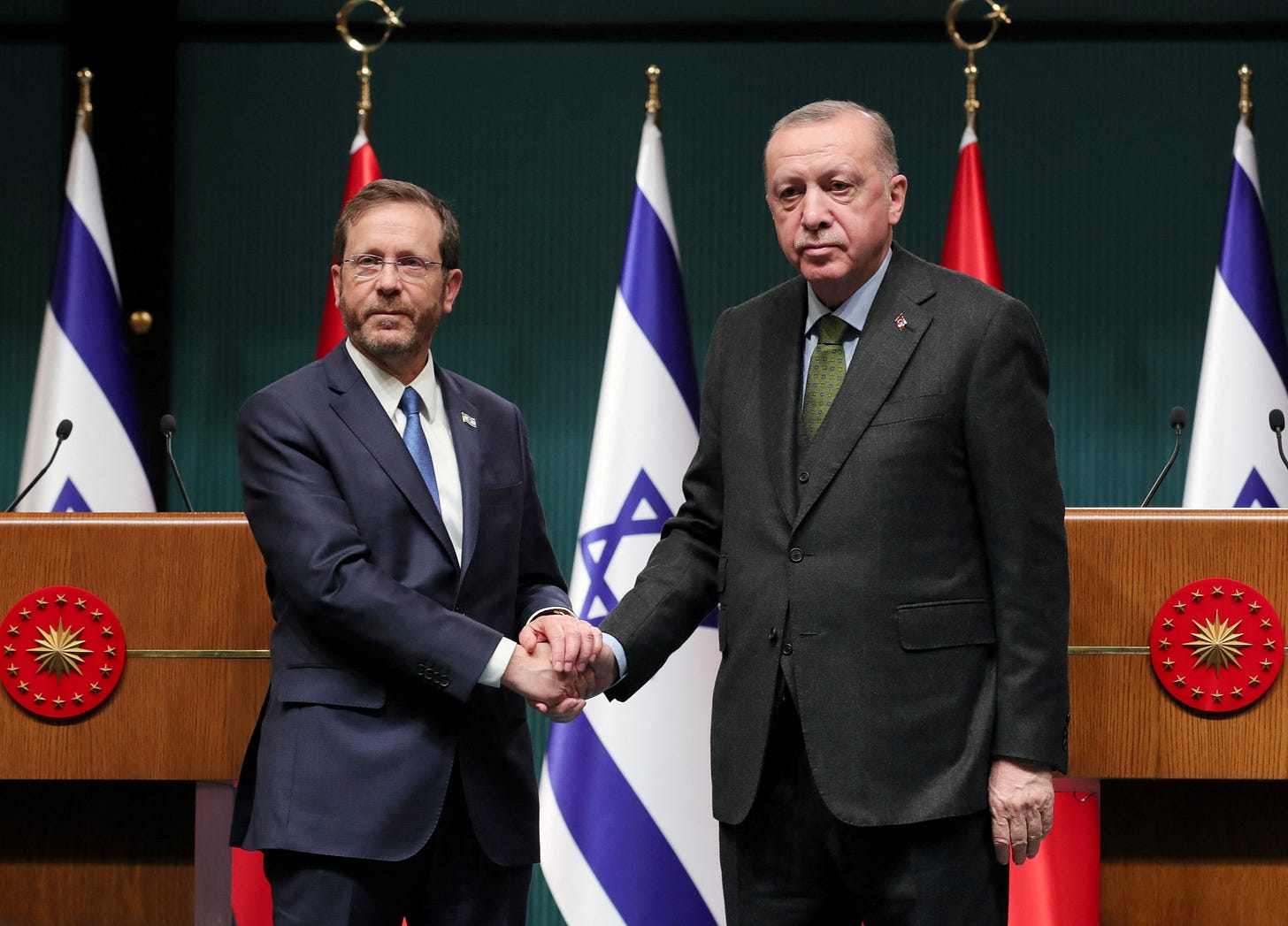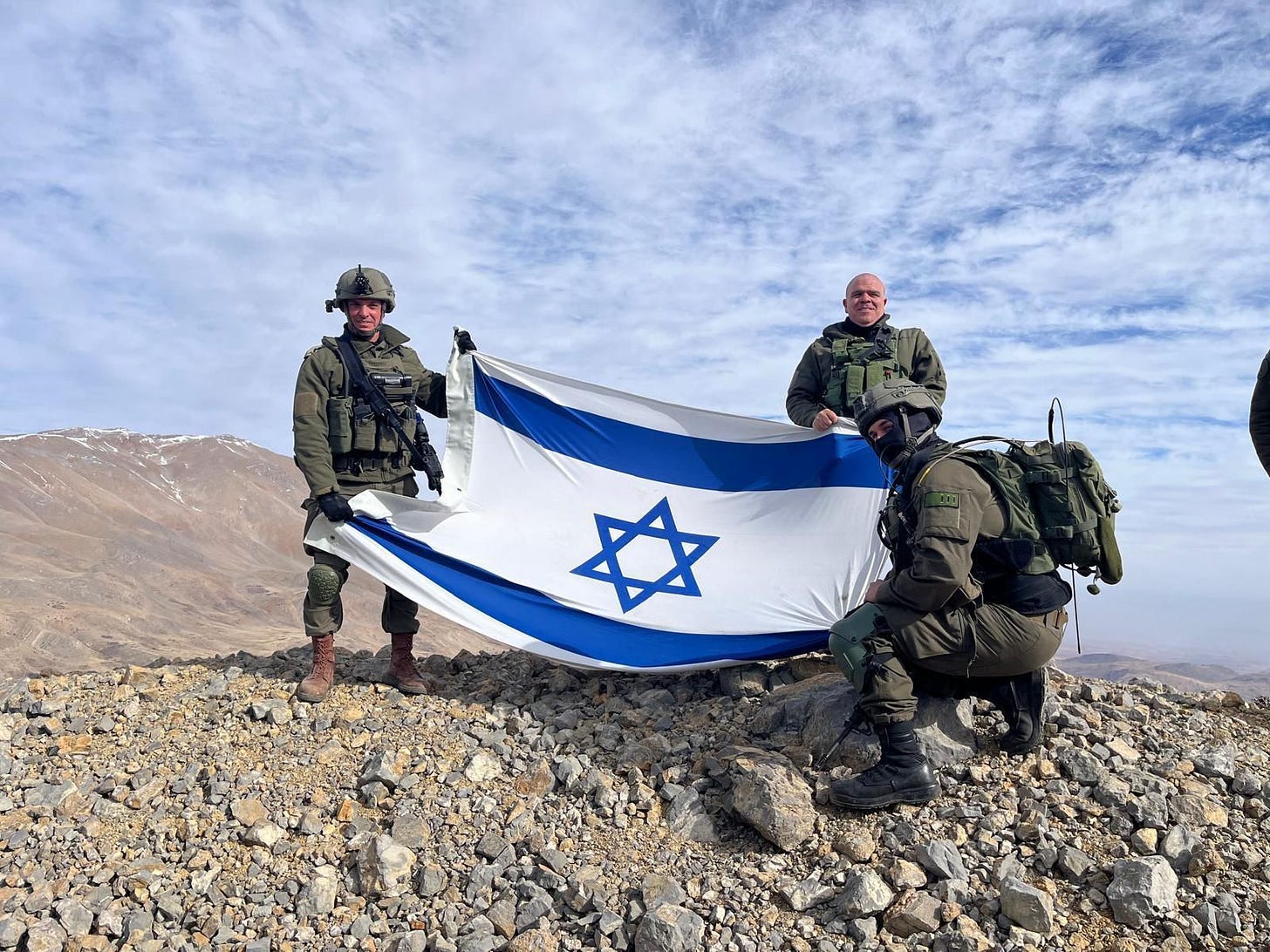A General Overview
The Assad regime has fallen. The ripple effects will be felt for many years to come. At present, the various players vying for influence in al-Shams and the broader Levant now arrive at irreversible and monumental strategic decision points: Rubicons that cannot be uncrossed.
The Americans have publicly signaled they do not intend to get involved in the internal political dynamics of the future of al-Shams, but they remain inside their buffer zone at al-Tanf. American and British jets have been pounding Daesh targets in the Eastern Syrian desert to prevent their reconstitution as a cohesive political force. The lame duck Biden administration has laid out conditions for the removal of Hayat Tahrir al-Shams (“the Organization for the Liberation of Syria”) as a listed terrorist entity: guarantees of minority and womens’ rights, and commitment to a peaceful and lawful transfer of power. This is a laudable aim, and will set al-Shams on a trajectory for reconstruction, political stability, and provide opportunities for a prosperous future for all Syrians. Some may say it is impossible, but to those pessimists I would point to the history of our own beloved Israel. As a fellow contributing merchant to this Substack Beau Chasse poignantly argues, discarding Ba’athism into the dustbin of history is itself a monumental achievement. The Syrian people have a right to try after decades of autocracy.
I remain optimistic as it comes to Syria for two reasons. The refugee crisis created by the Syrian civil war, the single largest refugee crisis since World War II, has created a prosperous diaspora network that can send remittances, and lobby for foreign assistance in rebuilding the country. Many able-bodied and fervently proud Syrians, who have been struggling to eke out existences from Istanbul to Toronto will decide to return home, providing a possible economic base. While optimistic, I am not naive. This is still the Middle East. The prospects of success depend on a leadership that is able and willing to commit to this vision for a new al-Shams. While Ahmed Sha’ara has portrayed himself effectively as a moderate, and may act as a pragmatist, the long term success depends on disparate rebel factions to come to a political consensus despite obvious ethnic and sectarian divisions that have plagued the polity of Syria since its modern borders were concocted by Sykes-Picot.
The Assad regime was propped up by the Alawites, and the clamor for retribution, especially as the true extent of the horrors it inflicted at Saydnaya Prison and elsewhere come to light will grow strong. Despite the pragmatism of Ahmed Sha’ara, there exist other rebel factions who are ardently Salafist and will demand the imposition of Sharia. The Kurds have established a de facto state in Northern and Eastern Syria, and the YPG and SDF are battle-hardened from a decade of fighting Daesh in the desert, and dodging Turkish airstrikes. The Druze in De'arra and al-Suweyyada will, as the Druze always do, hedge, and wait for things to settle, and then pledge loyalty to whoever ends up ruling al-Shams.
The Druze and Blue Gold
Israel crossed its Rubicon when it crossed into Rafah. The October 6th consensus of passivity, of deterrence, and of ‘mowing the grass’ has been replaced with an Israel that is assertive, action oriented, and unapologetic in the pursuit of its interests. The IDF has occupied the Syrian side of the demilitarized buffer zone, they have captured the Syrian side of Mount Hermon, and reports float around that Israeli tanks have reached as far as Qatana, some twenty kilometers from Damascus itself. Lame duck Biden and limping duck Starmer have backed the move, stressing that it is temporary, but have declined to provide a timetable in a region where ‘temporary’ can last decades. Meanwhile, the Air Force has wiped out Assad’s air assets, chemical weapons depots, naval assets, and research facilities. In my view, Israel should expand the buffer zone along the border all the way to the Damascus-Beirut highway, to further choke off the flow of funds and weapons to Lebanon.
Controlling the high-ground, and placing Damascus in the range of Israeli artillery fire has obvious strategic benefits, but what is less discussed, though it is of even greater strategic importance, is the flow of water in the Yarmouk drainage basin. Since 1987, the fraternal Arab states of Jordan and Syria have had an agreement governing water rights and usage, as administered by a bilateral Yarmouk River Basin Higher Committee. To summarize, Syria is allowed to construct infrastructure in the Yarmouk River Basin in exchange for guaranteeing the export of water to Amman, and placing a cap on the water Syria is entitled to use. The largest of these is the al-Wehda Dam, which sits on the Yarmouk river roughly on the Jordan-Syria border. Since the agreement was signed in 1987 “the number of Syrian dams has increased from 26 to 48, while around 3,500 wells were drilled to pump water from the river basin” reducing the flow of water flowing into the al-Wehda reservoir, with the Yarmouk River’s flow decreasing from 16 cubic meters per second in the 1960s to only one cubic meter per second. The Assad regime constructed these dams primarily to generate hydroelectricity, and to create water reservoirs for irrigation. The maintenance of traditional flood irrigation practices are the principal reason for why Assad’s Syria used an excess 6 million cubic metres of water per year, making the old-fashioned farming techniques appear to be a deliberate tactic to reduce what is available to Israel and Jordan.
By seizing control of the Syrian side of the demilitarized buffer zone, Israel now overlooks the hydroelectric and water irrigation infrastructure in the Yarmouk river basin, and has taken control of portions of it. The replacement of flood irrigation with Israeli drip irrigation methods, and ‘temporary’ control of the Yarmouk river basin will be a source of leverage for Israel to reconfigure hydrological infrastructure via an agreement with the Druze of De'arra and al-Suweyyada with whom the Golan Druze already have established contact. This will significantly restore the flow rate of the Yarmouk river, replenishing the Sea of Galilee and slowing or reversing the evaporation of the Dead Sea and at a much cheaper cost relative to alternatives like the Red-Med-Dead Sea pipeline. It will also alleviate Israel’s strategic reliance on desalination plants, de-risking Israeli water security, and enabling the Golan, Galilee, and indirectly the Negev to sustainably support larger populations, critical to the longer term strategic and demographic security for the State of Israel. In the Middle East, the contest for energy inputs gets most of the attention, but blue gold is just as essential as black gold in this parched part of the planet.
Turkey and the Kurdish Question
The fact that Turkey has been able to gobble up portions of Northern Syria, bomb the SDF and YPG in Northern and Eastern Syria with impunity, and the fact that they back some of the Sunni Islamist factions that just brought down the lynchpin of the Axis of Resistance heralds their ascent as a regional power. In the short term, Israel faces a strategic choice, because they must currently contend with an Erdogan regime increasingly beholden to ultranationalists and ultraconservatives with irredentist and fantastical ambitions most neutrally described as neo-Ottoman. Until such time that a Kemalist, more Western-oriented political leadership emerges in Turkey, Israel will have to contend with Erdogan the Watermelon Seller, the biggest political prostitute in all of the Middle East. Erdogan purchases Russian air defence systems while supplying the Ukrainians with Bayraktar drones, he plays host to Hamas while quietly maintaining a lucrative trade, and intelligence relationship with Israel. After the Gaza flotilla incident in 2010, it took twelve years for President Herzog to make a state visit and fully mend ties. Working with that ten year timeline as a baseline, Israel must find avenues to constrain and contain Turkey. In Syria, the biggest irritant for Turkish interests is a strong Kurdistan.
So, Israel must calibrate its strategic outlook on the Kurdish question carefully, and ensure the Americans align closely with it. As a matter of principle, I believe that Zionists must support any non-Arab minority group capable of meaningfully exercising self-determination. The more blows we deal to the fantasies of pan-Arabism and pan-Islamism that still grip the consciousness of Middle Eastern publics, the better odds reformers have at meaningful transformation of their economies, and societies which we have glimpsed under the auspices of the Abraham Accords. Back the Kurds to the hilt, full throttle, and you risk empowering Kurdish ambitions beyond their current borders, extending it within the territory of Turkey. As I believe Israel will have to forge a strategic partnership with the Turks, this is an unacceptable risk. However, abandon the Kurds to their fate, and you risk them reaching out to Iranians, enabling the establishment of new smuggling routes, resuscitating the Axis of Resistance from its fragile and failing state. Abandon the Kurds to their fate, and you risk the Shi’ite ‘axis of resistance’ led by Iran being supplanted by an ikwan ‘axis of jihad’ led by an Islamist Turkey. Eliminating the strategic capabilities of the defunct Assad military is in keeping with this middle-of-the road approach.
They can also invest in getting a normalization agreement with Saudi Arabia across the finish line, thereby playing the Sunnis off against each other.
The Russians, the Alawites and a Change in Posture on Ukraine
The spectre of vengeance being unleashed on the Alawites is predictable. Here too, Israel will have a strategic choice to make. Their strongholds are in Latakia and Tartus, on the Mediterranean coast. Here, Israel’s interests intersect with the Russians, meaning there may be Shaldag and Spetsnaz joint missions in the future to stabilize and preserve an Alawite enclave. The risk with the Alawites is of sea-based smuggling routes emerging. Some kind of meeting of the minds between Putin and Netanyahu therefore will be necessary. To leverage this, Israel could threaten to alter its position regarding the war in Ukraine. Maintaining security coordination with Russia in the Syrian theatre was the main realpolitik justification for Israel abstaining from providing any significant military assistance to Ukraine. With the Assad regime gone, and with a ceasefire holding in Lebanon, Netanyahu could sell the Arrow interceptor system, and Israel’s emerging anti-drone capabilities to Kyiv. This could significantly alter the balance of power in that war, and the mere threat of doing so could expedite a hostage deal in Gaza, given the coziness between Russia and Hamas.
So, Where Does This Lead?
Taking these parts as discussed, it is clear the most advantageous post-war political settlement for a post-Assad al-Shams is a decentralized federalist system of government that grants significant political autonomy to ethnic and sectarian minority groups, especially the Kurds and the Druze. Until such time that the dust is well and truly settled, Israel should absolutely maintain its new strategic and security buffer zones within southern Syria and pursue all means and incentives available to nudge the future administration of Syria in this direction. In exchange for such a framework, Israel, the EU, and the United States could offer significant financial assistance, support for the reconstruction of the Syrian military, and eventually, if all goes well, a normalization of relations between Israel and Syria that would permit a withdrawal back to the 1974 Disengagement Line. And the Golan Heights? We must inform Mr. al-Golani that we’ll be keeping that.
- Abba Eben







